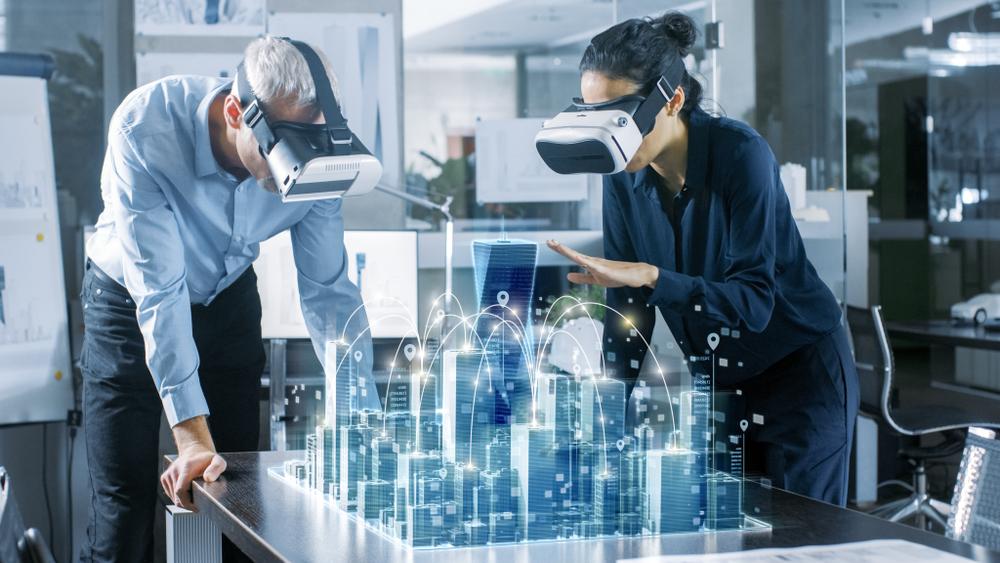Architecture is one of the most exciting and forward-thinking disciplines in the world. Combining practicality and artistic aesthetic, architecture is a great way for designers to express themselves while also building structures that will serve a definite, concrete (no pun intended) purpose.
As you might imagine, the world of architecture is no less affected by the inevitable march of technology than any other industry in the world. Technological trends are shaping architects’ designs, processes, and intentions just like they are with other artistic endeavours, so without further ado, here are some of the technological trends shaping the UK’s buildings right now.
Artificial intelligence

It’s pretty much impossible to ignore the discussion around AI right now. Is it a saviour that will automate all of the processes humankind finds boring and menial, or is it going to destroy our lives and take over the world?
Whatever you might personally think of AI, it’s likely to prove transformative when it comes to architecture. AI imagery could form the basis of future architectural blueprints, and as AI learns more about what makes great architecture, it could even take over the entire design process, constructing its own buildings from scratch.
That’s not even mentioning the ways in which AI will make construction automation easier. Actually building the designs that architects put together will become easier thanks to AI, which can learn from huge datasets, potentially mastering processes that will make building structures easier and more consistent.
Smart cities

You’ve probably come across the concept of “smart cities” somewhere in your travels. In a nutshell, these projects take the basic city infrastructure and infuse it with technology, turning it into a city that can respond to citizens’ needs and desires on a granular level.
Generally speaking, smart cities work the same way as smart home hubs do, but on a larger scale. With all of the systems in a smart city connected to one another, data can be collected which will then dictate how the city responds.
You could, for instance, collect data regarding parking, and (theoretically) prevent people without the correct parking clearance from parking in a space in which they’re not allowed to park. Alternatively, you could shut off certain areas of the city automatically depending on when you want members of the public to be allowed in. These are just a couple of the potential applications of a smart city.
3D printing

For those of us who came of age in the 90s, 3D printing often felt like an impossible dream. Imagine taking a printer and effectively being able to create any object you like; it felt magical and unattainable, but here we are in the 2020s, when 3D printing is not only existent but widespread.
Naturally, the applications of 3D printing for architecture shouldn’t be understated. Architects can create prototypes of buildings using 3D printers, but construction work could also be augmented by 3D printing; it could be possible for construction workers to 3D print elements of a building without needing to source the materials from elsewhere, for instance.
Some also believe that 3D printing could contribute to the actual building process itself, replacing traditional building materials until we have houses that are entirely constructed with a 3D printer. One thing’s for sure: the 3D printer is disrupting the architectural space, and it’s not going to stop anytime soon.
VR

Just like 3D printing, the world of VR felt like a distant dream when many of us were children, but it’s now being adopted on a mass scale by tech companies and developers everywhere.
The world of virtual reality is becoming more and more viable thanks to huge advances in technology and affordability. Meta is forging the way forward with (relatively) cheap VR devices, while the likes of Apple design devices intended for the higher-end space.
In the world of architecture, VR could be used to envision a building and explore it in real time without needing to actually build it first, which is an architect’s dream come true. In theory, the architect could then physically interact with elements of their building, removing them or changing them as they see fit.
AR

VR’s slightly less immersive cousin, AR still has a huge number of potential applications when it comes to the world of architecture, not least because it’s more easily accessible without needing to buy an expensive additional device.
Using your smartphone’s camera, you can already access many AR functions; if you’ve played the game Pokemon Go, then you’ve already used augmented reality to some extent. The applications for architecture should be pretty obvious if you’re already au fait with AR.
For instance, an architect could use an AR-enabled piece of software to place a building in its intended spot, seeing what it would look like in the real world. The architect could then use AR to alter their design based on newly emerging specifications, allowing them to create the perfect building for the job.
Conclusion
These are just a few of the tech trends currently shaping the architectural space. Technology is moving dizzyingly fast right now, and it’s almost impossible to keep up with all of the emerging trends that are affecting architecture.
All we know for sure is that technology will continue to influence the architectural space, fundamentally changing the ways in which architects approach their job and interact with the world around them. It’s an exciting time to be an architect!












